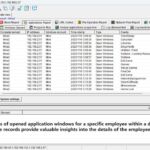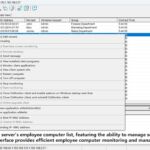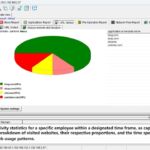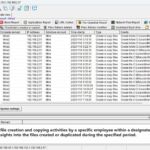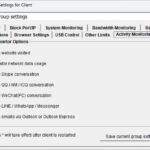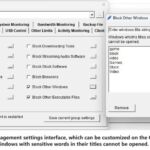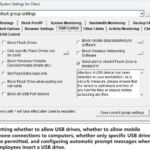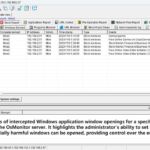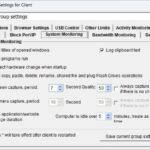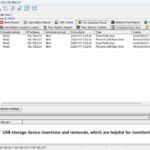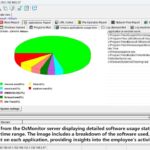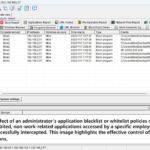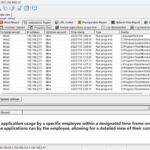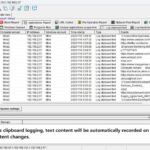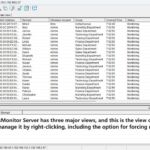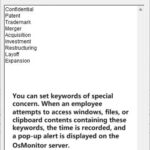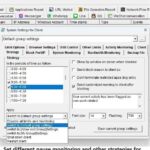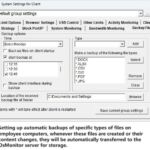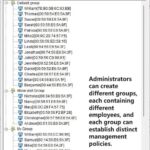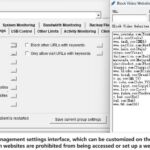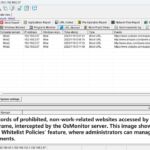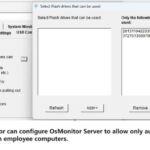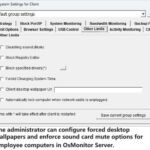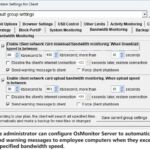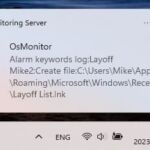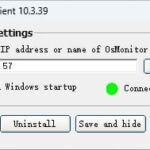Data mining algorithms play a critical role in monitoring software, as they can be used to discover valuable information, patterns, and trends from massive amounts of monitoring data. The following are some considerations regarding the accuracy, scalability, and applications of data mining algorithms in monitoring software.
The accuracy analysis of data mining algorithms in monitoring software is as follows:
- Data quality: The accuracy of data mining algorithms is influenced by the quality of monitoring data. Errors, missing data, or anomalies in the monitoring data can lead to inaccurate results. Therefore, it is necessary to clean and preprocess the monitoring data to ensure its quality before applying the algorithms.
- Feature selection: Selecting appropriate features is crucial for algorithm accuracy. Monitoring data may contain a large number of features, but not all of them are relevant to the monitoring objectives. Therefore, selecting key features that are relevant to the monitoring objectives can improve algorithm accuracy.
- Model selection: In monitoring software, choosing the right data mining model for the specific task is crucial. Different algorithms are suitable for different types of monitoring problems, such as anomaly detection, predictive analysis, etc. Choosing the appropriate model can enhance algorithm accuracy.
Data mining algorithms in monitoring software have the following scalability:
- Large-scale data processing: Monitoring software typically deals with large amounts of data, so data mining algorithms need to be capable of handling large-scale data. Scalability includes factors such as computational efficiency and memory usage. Techniques like parallel computing, distributed computing, and incremental computing can improve algorithm scalability.
- Algorithm complexity: The complexity of algorithms directly impacts scalability. Some complex algorithms may be time-consuming when processing large-scale data, while algorithms with lower complexity may be more suitable for handling large-scale data. Choosing algorithms with moderate complexity can improve scalability while ensuring accuracy.
- Hardware and infrastructure support: Adequate hardware and infrastructure support are required to achieve algorithm scalability in monitoring software. Technologies such as high-performance computing, distributed storage, and parallel processing can provide better scalability.
Data mining algorithms have a wide range of applications in monitoring software, including but not limited to:
- Anomaly detection: Data mining algorithms can identify abnormal patterns in monitoring data, helping detect abnormal events or behaviors and enabling timely response and alerting.
- Predictive analysis: By analyzing historical monitoring data, data mining algorithms can generate predictive models for forecasting future trends or events, aiding in making predictive decisions.
- Pattern recognition: Data mining algorithms can recognize patterns and correlations in monitoring data, revealing hidden information and supporting pattern-based decision-making.
- Fault diagnosis: Data mining algorithms can help diagnose faults or problems by analyzing patterns in monitoring data, assisting in identifying the root causes of issues.
- Performance optimization: Data mining algorithms can analyze monitoring data, identify performance bottlenecks, optimize resource allocation, and improve system efficiency.
In conclusion, exploring the accuracy, scalability, and application of data mining algorithms in monitoring software requires considerations such as data quality, feature selection, model selection, large-scale data processing, algorithm complexity, and hardware and infrastructure support. By selecting algorithms wisely and optimizing system architecture, the performance and effectiveness of monitoring software can be improved.
About OsMonitor:
The mission of OsMonitor is to create a Windows computer system tailored for work purposes, effectively regulating employee computer behavior. It enables employers to understand what employees are doing each day, monitoring every action, including screen activity and internet usage. Additionally, it restricts employees from engaging in specific activities such as online shopping, gaming, and the use of USB drives.
OsMonitor, designed purely as software, is remarkably user-friendly and requires no additional hardware modifications. A single management machine can oversee all employee computers. As a leading brand in employee computer monitoring software with over a decade of successful operation, OsMonitor has rapidly captured the global market with its minimal file size and excellent cost-effectiveness compared to similar software. At this moment, thousands of business computers worldwide are running OsMonitor daily.




